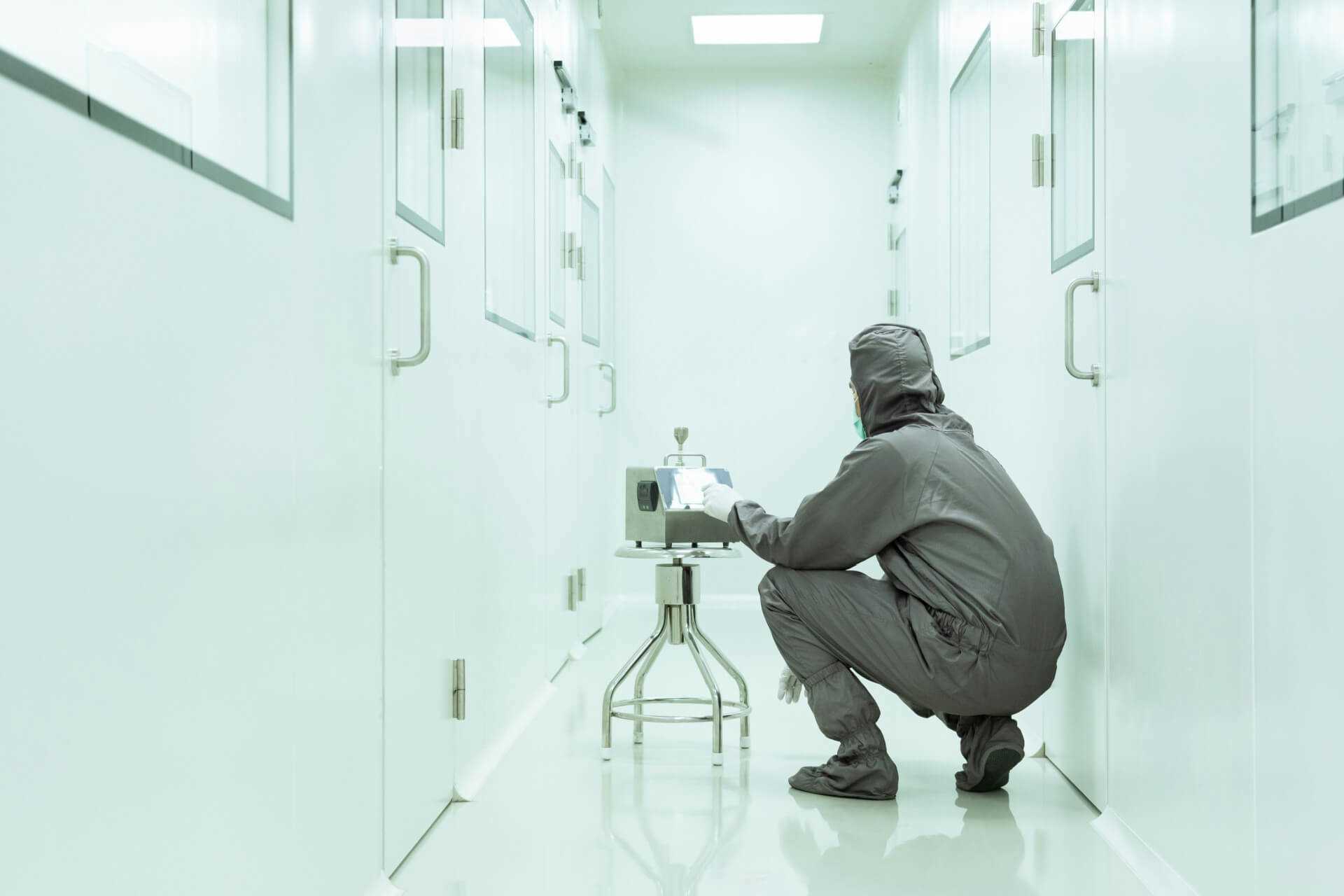
The Link Between Personnel Practices and Cleanroom Sterility
No matter how advanced a cleanroom’s design or how well-maintained its systems, human activity remains the leading source of contamination in controlled environments. Personnel introduce microorganisms, particulates, and other contaminants every time they enter a cleanroom—even when fully gowned. That’s why cleanroom sterility isn’t only about technology or cleaning products; it’s also about how people interact with the space.
In pharmaceutical and biotech facilities, people contribute to contamination through shedding of skin cells, hair, and clothing fibers, as well as through improper behavior like touching clean surfaces or bypassing gowning procedures. These small lapses can result in major consequences, especially in high-grade environments where even minor microbial presence can compromise a batch.
Vibraclean understands the importance of integrating personnel-related contamination risks into every decontamination plan. While we don’t control staffing practices, we design cleaning protocols that account for human behavior patterns, high-touch surfaces, and traffic flow—all of which directly affect cleanroom sterility.
High-Touch Surface Cleaning
Personnel contact surfaces frequently: door handles, pass-throughs, glove boxes, light switches, equipment controls, and workstation counters. These are prime areas for microbial and particulate transfer. Vibraclean prioritizes these touchpoints during every cleaning service, using disinfectants with appropriate contact times and coverage methods to ensure consistent reduction of bioburden.
Gowning and Transition Areas
Contamination risks are highest in gowning rooms and entryways where personnel move from uncontrolled to controlled zones. These spaces accumulate debris from street clothing, shoes, and exposed skin—even with proper gowning. We design enhanced cleaning protocols for these areas to reduce the risk of contaminants entering the cleanroom itself. Floors, benches, and gowning stations are all treated with attention to frequency and traffic volume.
Personnel Flow Considerations
The way people move through a cleanroom—where they walk, pause, and work—has a direct effect on contamination levels. Personnel often gather in specific areas during shift changes, inspections, or production steps. These “microzones” experience elevated contamination pressure and need to be factored into cleaning frequency and method.
Vibraclean adapts cleaning schedules to align with these patterns. Our technicians know where accumulation is most likely and ensure those zones are consistently maintained to the cleanroom’s required classification.
Cleaning to Complement Good Personnel Practices
Vibraclean’s decontamination services are designed to support the efforts of your operations and quality teams. While SOPs and training help reduce human error, our job is to minimize the impact of unavoidable contamination. Whether it's cleaning cleanroom chairs where personnel remain seated for extended periods, or disinfecting around glove ports that see repeated hand contact, our protocols are built to reinforce your sterility strategy.
Documentation and Alignment
We also document all cleaning activities to align with personnel movement logs and production schedules. This traceability ensures that you can link cleaning records with occupancy data during audits or root cause investigations—providing a clear picture of how personnel and cleaning practices work together to maintain compliance.
People will always be a necessary part of cleanroom operations. But with the right contamination control plan in place, their presence doesn’t have to be a liability. Vibraclean brings a human-focused approach to decontamination, helping pharmaceutical and biotech facilities stay clean, compliant, and confident in the face of everyday activity.
